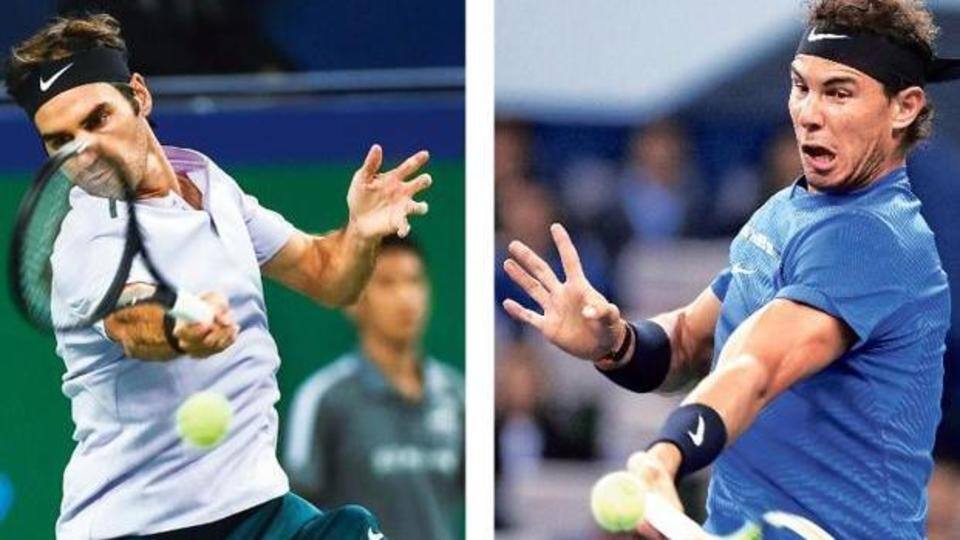
So much for doubt. At the end of two weeks in the slow clay of Paris, Rafael Nadal, tentative entering the tournament, held in his hands one more conquest of Roland Garros. It was title number 12 at the French Open, in 15 tries, a return unmatched in men’s grand slam singles.
The next best is the man Nadal is hyphenated with: Roger Federer, with eight titles in the quick grass of Wimbledon, out of 20 tries. As the clay leg of the tour ends and the short grass swing begins, the focus shifts to Federer and whether he can add to his return in what has become his backyard. What the French Open is to Nadal, Wimbledon is to Federer.
As with many things Nadal and Federer, a comparison is tempting. With both men entering the back end (Nadal) or tail end (Federer) of stellar careers, it is illustrative to delve deeper into these two runs for measures and comparators of their respective dominance.
What Nadal has accomplished on French Open clay is taller than what Federer has on grass. Titles are one measure. Even beyond that, numbers show that Nadal has been more crushing in victory and resilient in weathering adversity.
Nadal was ordained for the French Open. He arrived there as a 19-year-old in 2005, and won. In the semi-finals, he beat the top-ranked Federer in four sets, in what would be the first of their six meetings in Paris. Nadal has only lost thrice—effectively, twice—in the French Open: to Robin Soderling (2009, round of 16), Novak Djokovic (2015, quarter-finals) and Marcel Granollers (2016, third round, which Nadal forfeited due to injury without playing a point).
Nadal, who is about four years younger than Federer, has played 96 matches at the French Open, against 108 played by Federer at Wimbledon. Nadal has won 79% of these matches in straight sets, against 69% for Federer
Nadal has also won, on average, by a wider margin. One measure of the margin of victory is the ‘net games differential’, or the difference between games won and games lost. So, a 6-4, 6-4, 6-4 win yields a net games differential of +6. Seven matches (what it takes to win a grand slam) with an identical scoreline yields a net games differential of +42.
In 13 of the 15 years, Nadal has exceeded 42, including five times above even 70. Federer, by comparison, has done so in 10 out of 20 years. One part of the difference between the two is that Nadal straightaway started winning titles at the French Open. Federer did so at Wimbledon from his fifth year onwards.
Another aspect of this, as well as in most quantitative measure while making such comparisons, is the difference in surfaces. Grass is a faster surface than clay. The serve is more of a factor, and offers players the opportunity of winning games relatively easily while serving. As a corollary, on clay, the serve is less of a factor, and Nadal, with his heavy shot-making from the backcourt, blunts that edge further.
Both men, Federer especially, have been exemplars of longevity. Nadal also blossomed younger, and it’s why Nadal’s match graph at Roland Garros shows a roughly equal distribution between players younger to him and older to him. Federer’s match graph, in both wins and losses, is weighed towards players younger than him.
Nine of Federer’s losses have been to players younger than him. Of the two losses that Nadal has had in Paris, one has been to a player younger than him and one to a player older than him
How do the two fare in pressure situations? While Nadal has averaged more break points in a match than Federer (9 to 7), he has played one-third the number of tie-breakers played by Federer. That’s partly because grass is a faster surface, though both have won three-fourths of their tie-breakers
Where Nadal cranks it up is the fourth and fifth sets. In those two sets, compared to Federer, Nadal wins by a higher game margin and loses by a lower game margin
In head-to-head matches in their respective lairs, Nadal has stretched Federer more than the other way around. It’s 2-1 to Federer at Wimbledon and 6-0 to Nadal at the French Open. Nadal lost to Federer in the finals in 2006 and 2007, before beating him in 2008, in what has been Federer’s longest match in Wimbledon at 12 minutes short of 5 hours.
By comparison, Federer has never beaten Nadal in Paris in six tries. After their first meeting in 2005, they contested three consecutive finals between 2006 and 2008, with Federer managing all of two sets. In this French Open, he lost to Nadal in the semi-final. Now, on to Wimbledon and the prospect a new chapter in these two rich and enduring narratives.
howindialives.com is a database and search engine for public data